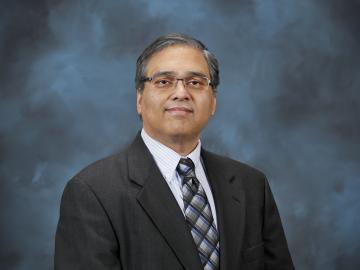
Filter News
Area of Research
- (-) Materials (124)
- (-) Neutron Science (53)
- (-) Nuclear Science and Technology (10)
- Advanced Manufacturing (6)
- Biological Systems (2)
- Biology and Environment (72)
- Building Technologies (1)
- Computational Biology (2)
- Computational Engineering (3)
- Computer Science (16)
- Electricity and Smart Grid (1)
- Energy Science (75)
- Functional Materials for Energy (1)
- Fusion and Fission (8)
- Fusion Energy (4)
- Isotope Development and Production (1)
- Isotopes (8)
- Materials Characterization (1)
- Materials for Computing (18)
- Materials Under Extremes (1)
- Mathematics (1)
- National Security (28)
- Quantum information Science (7)
- Sensors and Controls (1)
- Supercomputing (115)
- Transportation Systems (1)
News Topics
- (-) Bioenergy (17)
- (-) Biomedical (21)
- (-) Computer Science (26)
- (-) Materials Science (88)
- (-) Physics (31)
- (-) Security (3)
- 3-D Printing/Advanced Manufacturing (30)
- Advanced Reactors (14)
- Artificial Intelligence (12)
- Big Data (3)
- Biology (11)
- Biotechnology (1)
- Buildings (5)
- Chemical Sciences (34)
- Clean Water (4)
- Composites (9)
- Coronavirus (14)
- Critical Materials (13)
- Cybersecurity (6)
- Energy Storage (38)
- Environment (21)
- Exascale Computing (2)
- Fossil Energy (1)
- Frontier (4)
- Fusion (16)
- Grid (5)
- High-Performance Computing (6)
- Hydropower (1)
- Irradiation (1)
- Isotopes (16)
- ITER (1)
- Machine Learning (7)
- Materials (80)
- Mathematics (1)
- Microscopy (27)
- Molten Salt (7)
- Nanotechnology (43)
- National Security (4)
- Neutron Science (129)
- Nuclear Energy (50)
- Partnerships (11)
- Polymers (18)
- Quantum Computing (4)
- Quantum Science (15)
- Simulation (1)
- Space Exploration (10)
- Summit (6)
- Transportation (19)
Media Contacts

A study led by researchers at ORNL could help make materials design as customizable as point-and-click.

Muralidharan was recognized for “a highly prolific spirit of innovation in creating or facilitating outstanding inventions that have made a tangible impact on the quality of life, economic development and welfare of society.”

More than 50 current employees and recent retirees from ORNL received Department of Energy Secretary’s Honor Awards from Secretary Jennifer Granholm in January as part of project teams spanning the national laboratory system. The annual awards recognized 21 teams and three individuals for service and contributions to DOE’s mission and to the benefit of the nation.

Neuromorphic devices — which emulate the decision-making processes of the human brain — show great promise for solving pressing scientific problems, but building physical systems to realize this potential presents researchers with a significant

A world-leading researcher in solid electrolytes and sophisticated electron microscopy methods received Oak Ridge National Laboratory’s top science honor today for her work in developing new materials for batteries. The announcement was made during a livestreamed Director’s Awards event hosted by ORNL Director Thomas Zacharia.

Ten scientists from the Department of Energy’s Oak Ridge National Laboratory are among the world’s most highly cited researchers, according to a bibliometric analysis conducted by the scientific publication analytics firm Clarivate.

A team led by the U.S. Department of Energy’s Oak Ridge National Laboratory demonstrated the viability of a “quantum entanglement witness” capable of proving the presence of entanglement between magnetic particles, or spins, in a quantum material.

A team led by the ORNL has found a rare quantum material in which electrons move in coordinated ways, essentially “dancing.”

A multidisciplinary team of scientists at ORNL has applied a laser-interference structuring, or LIS, technique that makes significant strides toward eliminating the need for hazardous chemicals in corrosion protection for vehicles.

ASM International recently elected three researchers from ORNL as 2021 fellows. Selected were Beth Armstrong and Govindarajan Muralidharan, both from ORNL’s Material Sciences and Technology Division, and Andrew Payzant from the Neutron Scattering Division.


